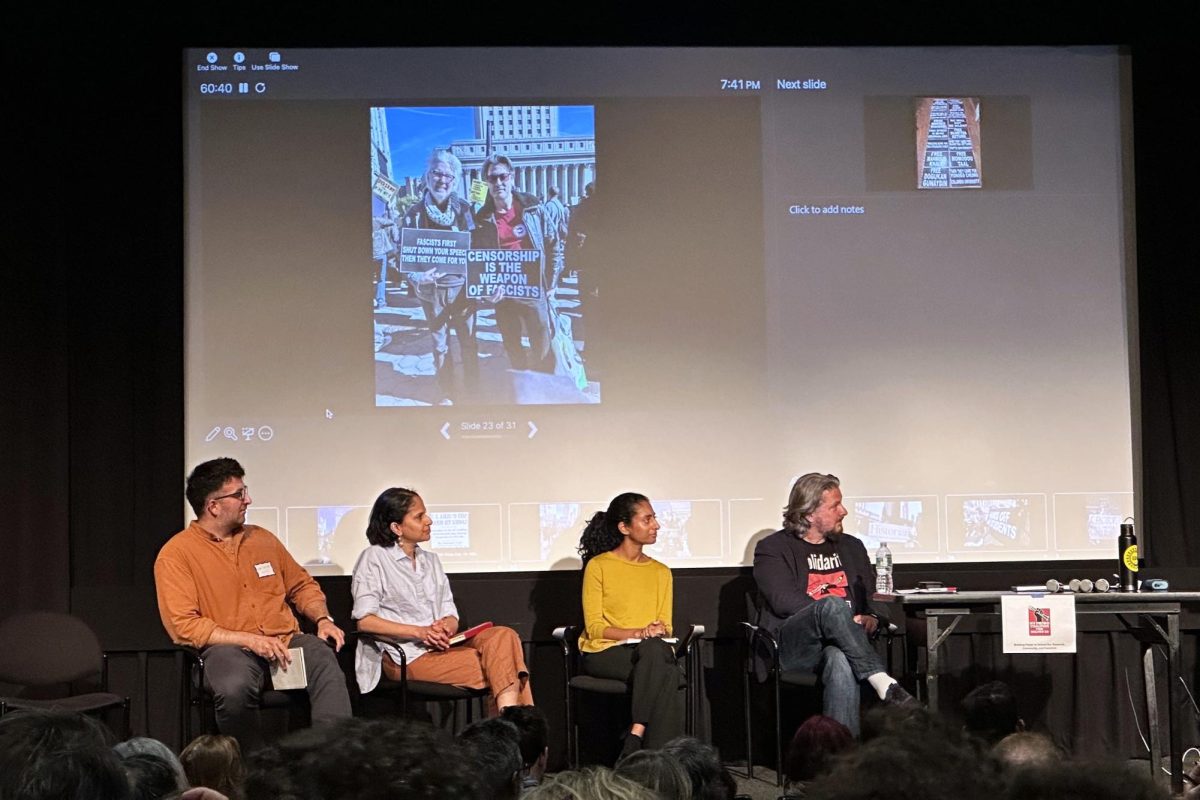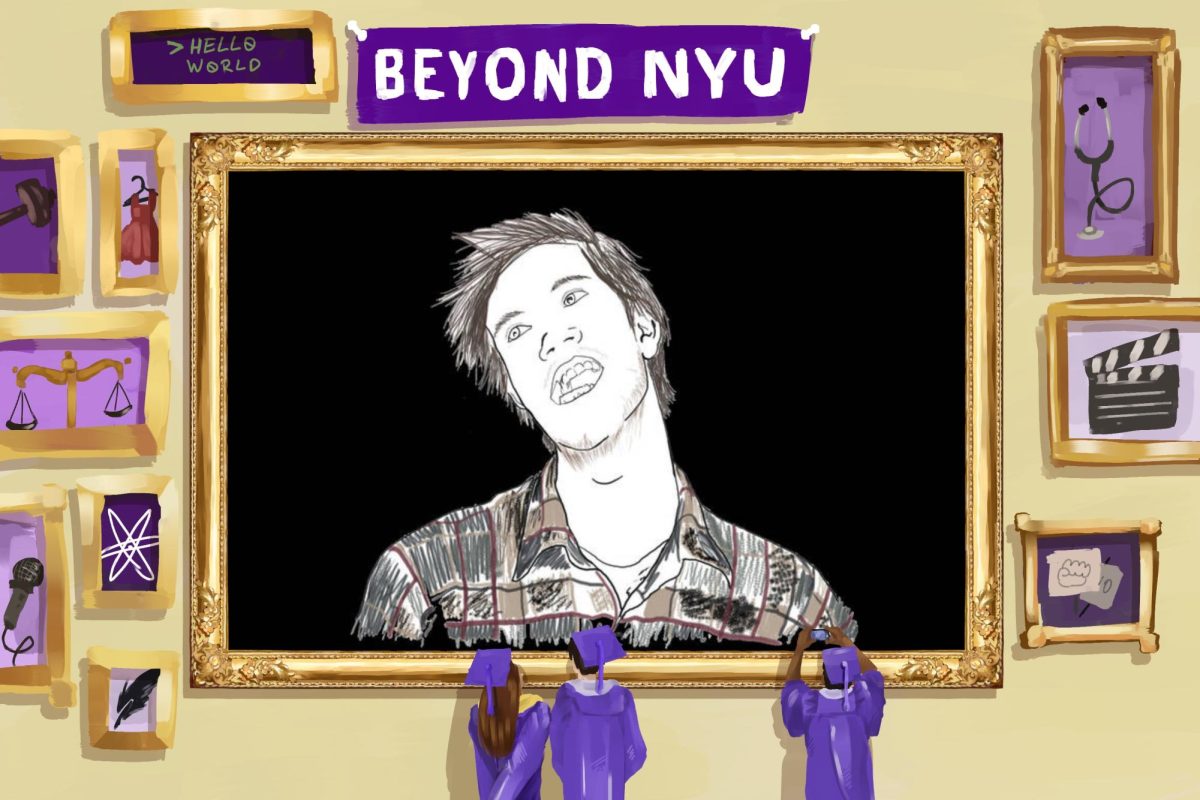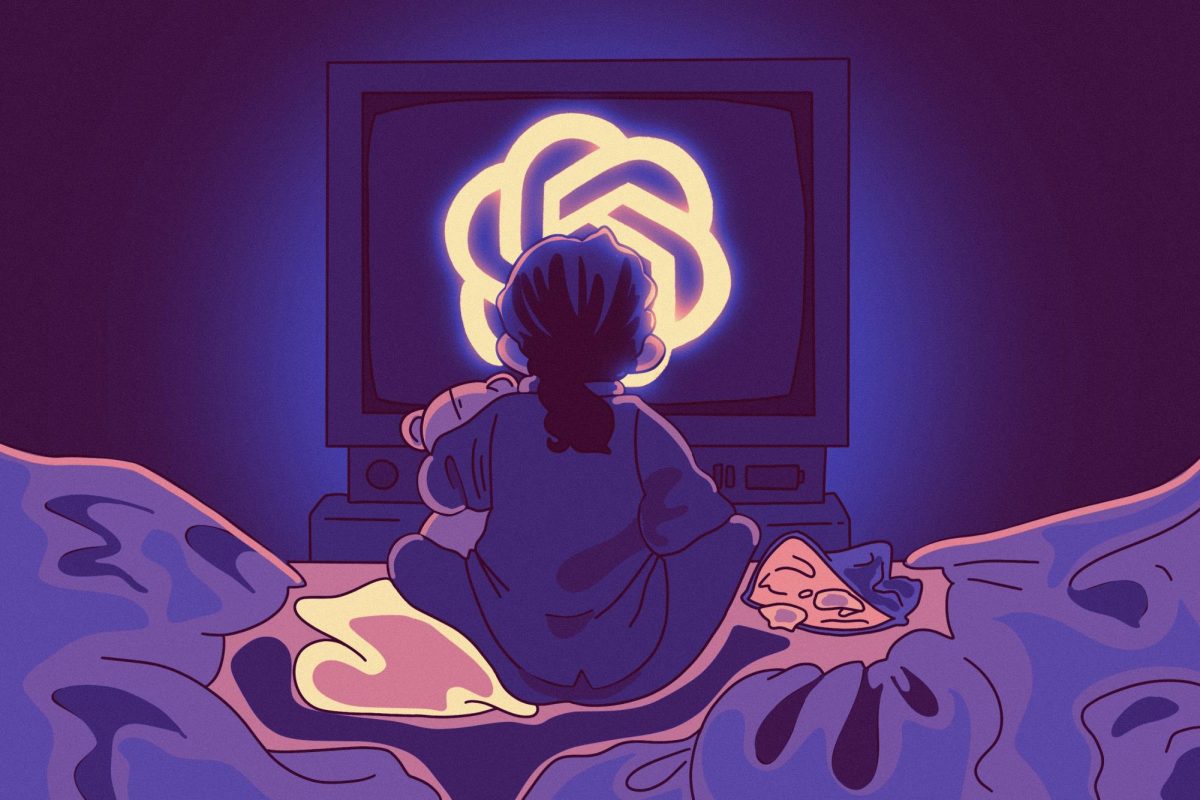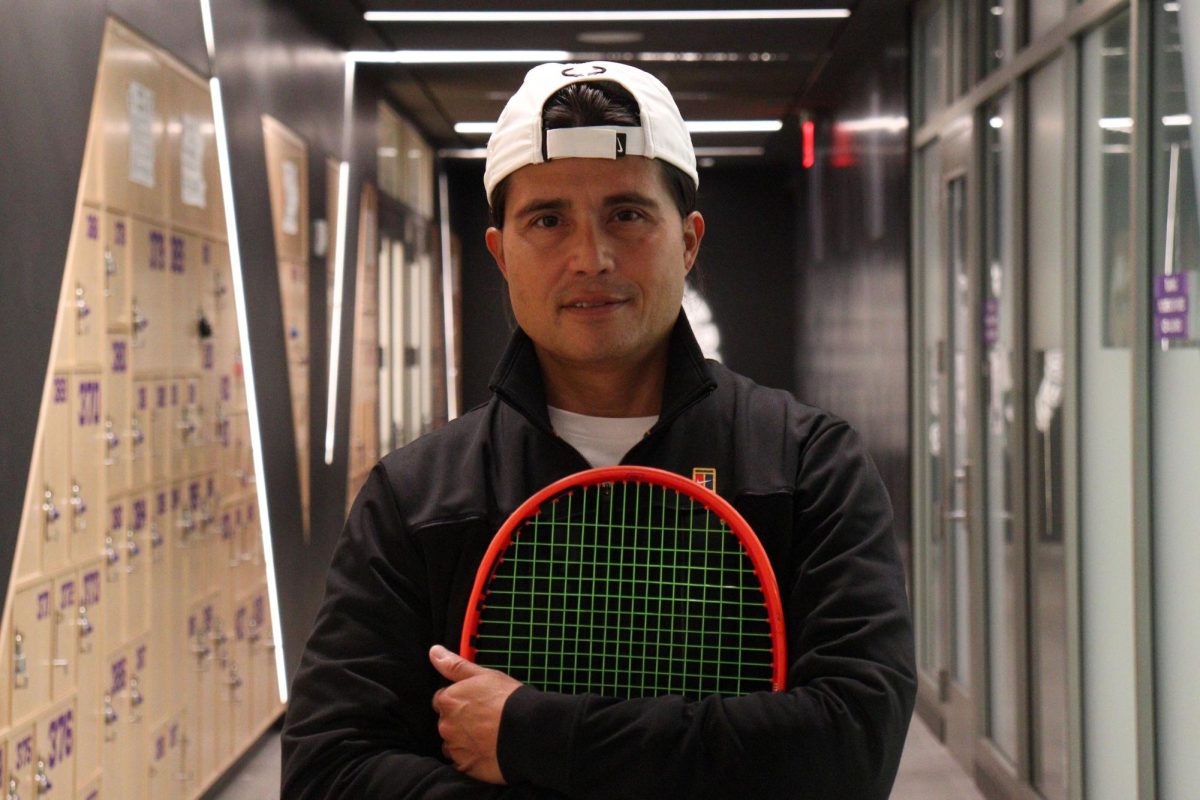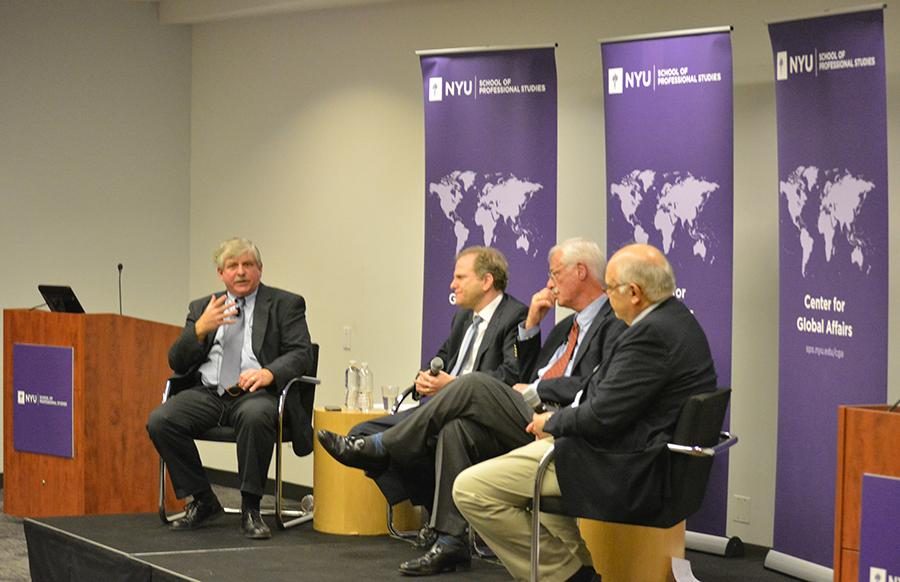Pros, cons of nuclear energy weighed
Seth Grae, Alan Hanson, and William Horak speak to Chris Gadomski, during a discussion on nuclear power as an alternative fuel source.
November 4, 2014
Experts discussed the use of nuclear technology as alternative energy, along with questions of safety and cost at a panel on Nov. 3. The discussion, hosted by the Center for Global Affairs, addressed doubts about the proliferation of nuclear energy.
Chris Gadomski, SPS professor and lead nuclear analyst at Bloomberg New Energy Finance, moderated the panel, which examined these issues and discussed the changing landscape of global energy, focusing on three specific areas.
“The first is safety, the second is economics and the market and the third is spent fuel management,” Gadomski said. “These are three issues that surface all the time in this area.”
Gadomski introduced the issue of safety of nuclear energy, which he said is one of the greatest concerns with this form of power. He framed much of the panel around the events following the Fukushima Daiichi disaster of 2011.
Alan Hanson, executive director of the International Nuclear Leadership Education Program at the Massachusetts Institute of Technology, explained that slow cleanup following the Fukushima disaster was caused by Japan’s homogenous and consensus-based society.
“I am absolutely sure that if this accident took place anywhere else in the world the progress of cleaning up the site would have moved a lot faster,” Hanson said.
Hanson added that his team at MIT is looking into the use of advanced fuel in the area of nuclear energy. These fuels — known as accident-tolerant fuels — can withstand accidents similar to Fukushima without many of the negative effects.
Gadomski also questioned panelists on the ways in which nuclear energy fits into the climate change movement. William Horak, chair of the Department of Nuclear Science and Technology at Brookhaven National Laboratory, said the current climate change movement seems to be promoting the use of renewable energy technologies rather than nuclear energy, which may be a mistake.
“One of the things my laboratory does is energy analyses for all types of systems, called life cycle analysis,” Horak said. “When you do these analyses consistently, nuclear matches up essentially the same as renewable sources of energy, and actually better than some kinds of renewable energies.”
Another question addressed whether the proliferation of nuclear weapons is an overstated concern, and how to prevent the spread of nuclear materials. While all panelists agreed that nuclear material proliferation is definitely a concern, Seth Grae, president and CEO of the Lightbridge Corporation, said this threat could be minimized through the involvement of a U.S. company.
“If you want to ensure there is never nuclear proliferation in a country, get a U.S. company embedded in their nuclear development,” Grae said. “In the countries that Lightbridge works, there will never be a nuclear weapons program due to our strict inspection regimes.”
Giovanni Dubon, an SPS graduate student, said he agreed with the panelists’ view that safer nuclear energy looks promising, adding that his studies in this area informed his belief.
“The more I learn about nuclear power, the more it does sound like it is safer than what the general public believes,” Dubon said. “The panelists mentioned ideas more in line with what studies have shown, and it is information the general public doesn’t always read or get access to.”
A previous version of this article contained a misspelling of the name, Chris Gadomski. WSN regrets this error.
A version of this article appeared in the Tuesday, Nov. 4 print edition. Email Ruby Schwartz at [email protected].

